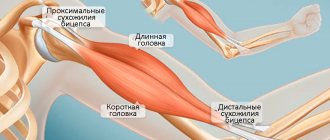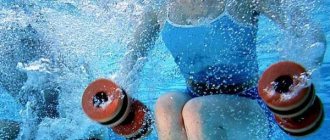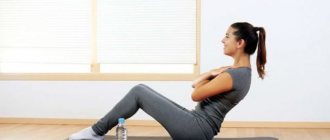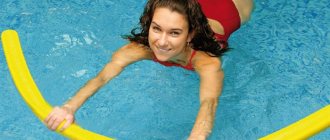Losing extra pounds quickly without harming your health is not easy. Anyone who has ever personally encountered the problem of losing weight knows about this. Unfortunately, there is no magic remedy that would dissolve fat and add definition to the body in a couple of days. Only proper nutrition and exercise together help achieve the desired goal.
Swimming helps fight excess weight. Pool training has virtually no contraindications, is accessible to people of all ages and, with the right approach, is effective for losing weight even with a lot of extra pounds. Studying swimming styles, mastering sets of exercises for different parts of the body, as well as regularly attending training helps to achieve results.
How swimming in water affects weight loss
Experts have proven that exercise in the pool not only comprehensively heals the body, but also promotes weight loss. Why does this happen:
- The process of swimming activates blood circulation and saturation of cells with oxygen. As a result, metabolism improves and subcutaneous fat is intensively burned.
- When moving in water, a person is in a state of “semi-weightlessness”. This allows you to move more intensely than on land, without risking your joints or spine.
- The swimmer has to constantly overcome the resistance of the water, which requires additional effort. This load is equated to working with dumbbells and weights on land.
- The thickness of the water creates a massage effect. This not only increases the elasticity and firmness of the skin, but also gets rid of cellulite.
- The difference in temperature between the body and the water in the pool (according to the norms is 22–29 degrees Celsius) forces the body to spend energy on heating, which additionally burns calories and fat deposits.
- Swimming and exercises in water involve all muscle groups at once. This makes the weight loss process uniform, unlike exercise on land, where specific muscles are worked during the workout. This activity requires a lot of energy.
When swimming, the body burns a lot of calories, which helps burn fat deposits and effectively lose weight. At the same time, the minimal load on the musculoskeletal system allows people with significant excess weight and disabilities to exercise in water.
How to lose weight by swimming in the pool
There are a number of recommendations, following which will help you effectively lose extra pounds and get your body in order in a fairly short time. And the first thing that experts advise is to exercise not on your own, but under the guidance of a trainer. At least at the initial stage. After all, incorrect swimming technique and incorrect loads will not only prevent you from achieving the desired result, but can also harm the body. The instructor will draw up a training program, monitor the correct execution of the movements and correct the mistakes of the beginner.
The pool at the La Salute fitness center employs professionals who you can always turn to for help. Consultations, individual training programs taking into account age, weight and body condition, monitoring of implementation and timely adjustment of the process will ensure high-quality weight loss results and safe stay in the water. Personal lessons and support are available to clients.
Also, to achieve results, you need to visit the pool regularly: at least three times a week, and ideally every other day. In this case, you need to swim for at least an hour. However, you need to start with 30 minutes and train like this for a week. Then slightly increase the duration of the lesson and only after a month switch to 1 hour. During the specified time, it is important not to just be in the water: stand, warm up or swim slowly. Intensive exercise should occupy at least 70% of the time.
Important! The physiological rate of weight loss during the week averages 0.5-1.8% of total weight. Moreover, over the same period of time, obese people lose more kilograms. But in any case, these figures clearly demonstrate that you should not expect rapid weight loss results, and you need to prepare yourself in advance for a long visit to the pool.
Before training in water, be sure to warm up your muscles on land (squats, body turns, push-ups) or swim for 5 minutes in the water in free style. It is advisable to increase the pace of the lesson gradually, reaching a peak in the middle of the period, and towards the end switch to light leisurely movements or just walking. During the process, it is important to breathe correctly and take short breaks, relaxing on your back. For relaxation, you can use foam or a ball.
Good results are provided by interval training, for example, 5 minutes of intense swimming, then 2 minutes of rest. But, according to the advice of experts, the optimal periods are 30/15 seconds or 40/10 seconds. At the same time, it is unacceptable to rest less and work more. It is necessary to reduce the load if fatigue occurs earlier than at the 6-7 interval. During training, it is imperative to monitor your heart rate, which should be about 140 beats/min.
It is important to follow a few more rules:
- It is better to swim for weight loss before eating (ideally in the morning on an empty stomach) or no earlier than 1.5 hours after eating;
- before and after training you need to drink a lot of still water;
- after class you can eat only 2 hours later;
- It is important to balance the diet, making it fractional, and replacing unhealthy foods with vegetables and fruits.
Useful tips
In order for swimming to really bring benefits and contribute to effective weight loss in the shortest possible time, you need to try to follow the following rules.
- For the first lessons and choosing a training scheme, hire an instructor.
- You should always start with a 10-minute warm-up on dry land to warm up your muscle tissue.
- Another 10 minutes - warm-up at the sides so that the body gets used to the water.
- The pace increases gradually towards the middle of the lesson, and then gradually decreases.
- To restore breathing, use backstroke.
- For the first 2 weeks, classes should last no more than half an hour, the next 2 - 45 minutes each, and finally, you can move on to hour-long training.
- The frequency of classes is every other day.
- Combine several swimming styles to lose weight in different parts of the body.
- Nutrition plays a very important role when swimming for weight loss. You don’t need to go on a diet, but you will have to make smaller portions, eat more frequently (up to 6 times a day), eliminate everything harmful (or at least limit it) and eat meat, fish (boiled or steamed only), fruits, vegetables, greenery.
- 1.5 hours before swimming and the same amount of time after it, you should not eat at all.
I have an opinion. Fitness swimming instructors believe that the most useful style for losing weight is breaststroke. If you actively swim for just half an hour, you can burn 360 calories at once. In this case, almost 70% of the muscles will be involved in the process.
How effective swimming will be as a means of losing weight will depend on compliance with all of the above recommendations and the correct choice of technique and set of exercises.
And if consultations and comments from a trainer are organically woven into all this action, after just a month of intensive training in the pool, some of the kilograms will be lost, there will be less fat deposits, and most importantly, the figure will shine with its charming, sculpted shape.
How many calories are burned when swimming?
Those who decide to bring their figure back to normal with the help of water training need to know how calories are consumed. After all, in order to lose weight, the body must lose more than it receives, and with a lack of energy, process fat reserves. True, the numbers of calories burned will be approximate, since the value depends on many factors. However, it is realistic to calculate averages. Things to consider:
- Swimming pace. Even when moving in the same style, calories are burned more intensely with a faster training rhythm. So, in an hour of simple balancing on the water at the side, you can burn 200–250 kcal, while with intense movement at an average heart rate of 140 beats/min, swimmers lose from 500 to 1200 kcal.
- Gender of a person. Regardless of diet, the male body produces more energy than the female body. Moreover, this mainly applies to swimming and does not apply to other types of training. This pattern is associated with the predominance of hand work when moving in water, and in men they are stronger.
- Losing weight. As mentioned above, over the same period of time (but without taking into account other factors), “large” people burn more calories than those who are leaner to begin with. This is explained simply: to keep the body afloat and move in the water, a heavy person spends more energy.
- Body type. It has been proven that people with different body types lose different amounts of calories at the same level of exercise. In this case, the metabolic rate and the size of the fat layer matter.
- Water temperature. The lower the degrees, the greater the calorie consumption. Experts do not recommend losing weight when the water temperature in the pool is above 27 degrees.
- Swimming style. Since each moving technique has a different load, the number of calories burned is different.
Interesting! To lose 1 kg, you need to burn approximately 7500 kcal.
It’s interesting to compare energy costs when swimming with some types of physical activity on land:
| Walking | Burning calories is only possible at a fast pace (6 to 9 km/h). In this case, the consumption will be 300–850 kcal. But moving so dynamically is problematic for many |
| Run | In 1 hour you can burn 300–600 kcal. The same amount is spent at a moderate swimming pace. But people with significant excess weight can bear the stress of water much easier. In addition, you can swim in those pathologies in which running is prohibited |
| Bike | Pedaling contributes to the loss of up to 800 kcal. But consumption begins only after half an hour of training, which requires long distances and not everyone can do. This is especially problematic for older and very obese athletes. Also, cycling differs from swimming by working only certain muscles of the body. |
| Power training | In 1 hour of such exercises in the gym you can burn 250–400 kcal, which is identical to calm swimming in the pool for an hour. Moreover, this sport has many health restrictions and puts stress only on individual muscles. |
The number of calories burned directly depends on the training time. The fact is that energy consumption begins only after 20 minutes after the start of activity, so it makes no sense to train less to lose weight. For example, if in 30 minutes, depending on the style and intensity, you can spend 150–350 kcal, then already an hour of high pace the body loses 650–850 kcal. Obviously, during this time the muscle corset will also be perfectly formed.
Pros compared to other weight loss methods
Some researchers write that, in general, in terms of calorie expenditure, swimming and running are equal, or running even slightly wins (depending, again, on the intensity and speed). Other researchers write that both sports are inferior to strength training in the gym in terms of weight loss.
However, another fact often goes unnoticed: swimming is considered the most harmless sport for the body.
If runners subject their knee joints to shock loads , and gym goers put axial loads on the spine and have a risk of joint injuries, then swimming, on the contrary, entails a minimum of harm to the body and a maximum of benefits for the spine and joints .
Moreover, for people who are seriously overweight, swimming is essentially the only option . In case of high obesity, both running and a significant part of the exercises in the gym can harm the spine and joints.
The undoubted advantage of swimming is that it is practically the only type of physical activity in which almost all muscles, ligaments, and joints are affected and trained .
I wrote in more detail about the benefits of swimming and all its advantages here.
Swimming techniques for weight loss
Burning calories in the pool directly depends on the style of movement in the water. Moreover, each technique involves working on certain parts of the body. Therefore, swimming in the pool for weight loss will be most effective when alternating (combining) styles in an individually composed order. Usually 4 sports techniques are considered:
1. Breaststroke. A slow and calm type of swimming is considered comfortable for women and beginner swimmers, but difficult to master. The arms make simultaneous strokes, moving apart at depth to the sides, and the legs make, as it were, pushing movements, bringing and spreading the feet and legs. When swimming, synchronicity and consistency of processes and correct technique in the legs are important. But when moving with breaststroke, you can rest after each stroke, saving energy.
| How many calories does it burn in 60 minutes, kcal | What muscles and body parts are worked? | Effects |
| 360–840 (depending on gender and weight) | Pectoral muscles, shoulders, triceps, quadriceps, abdominal muscles, calves, forearms | The skin on the inner thighs and armpits is tightened. Arms and legs are losing weight. Breaks down cellulite on the buttocks |
2. Crawl on the chest (belly). A fast style of swimming in which the arms alternate in vertical strokes and the legs alternate in scissor-type strokes. Due to prolonged continuous movement at high speed, the equipment makes it possible to expend a large amount of energy.
| How many calories does it burn in 60 minutes, kcal | What muscles and body parts are worked? | Effects |
| 550–750 (depending on weight and gender) | Muscles of the arms (biceps, triceps), back and neck, oblique muscles of the upper abs and all parts of the thigh | Lose weight in arms, legs, stomach and buttocks |
Important! Active burning of fat in the hips and waist is facilitated by swimming with fins, which increases the load on the legs.
3. On the back. Most often, the style involves crawl or breaststroke movement. The technique is similar to the strokes performed on the stomach, and occurs at a fast pace. Many new swimmers choose the backstroke style because the face is above the surface of the water, which makes breathing easier.
| How many calories does it burn in 60 minutes, kcal | What muscles and body parts are worked? | Effects |
| 480–550 (depending on gender and weight) | Glutes, trapezius, upper and middle back | Legs and hips are tightened. Fat loss evenly throughout the body, especially on the sides Arms are losing weight |
4. Butterfly. The style is considered the most difficult, requiring high physical training and the attention of a trainer to correctly master the elements. For this reason, the technique is more suitable for men. In butterfly, the body makes wave-like movements, the arms make simultaneous vertical strokes, and the legs folded together work from the hips like a tail. Due to the constant high intensity, the technique burns a large amount of energy and subcutaneous fat.
| How many calories does it burn in 60 minutes, kcal | What muscles and body parts are worked? | Effects |
| 600–920 (depending on weight and gender) | Muscles of the neck, chest, back and abs, calf muscles, quadriceps, hamstrings | The fat layer is removed from the abdomen and buttocks. The inner thighs are tightened. Legs are losing weight |
Important! By combining butterfly and breaststroke, you can achieve better results in losing weight in your thighs and buttocks. To do this, you need to swim alternately an equal number of sets during the lesson (for example, repeating 4 breaststroke and 4 butterfly strokes). The effect will become noticeable within 2-3 months.
Speaking about the calories burned by women and men during different types of swimming, the following average values are given:
| Styles | Energy consumption for 1 hour of training, kcal | |
| Women | Men | |
| Breaststroke | 490 | 730 |
| Crawl on chest | 500 | 690 |
| On the back | 600 | 740 |
| Butterfly | 570 | 770 |
If you work independently in the pool (without contacting a trainer), videos on the Internet will help you correctly master the movements in a specific technique.
Additional exercises in water
In addition to swimming in different styles, in the pool you can do exercises aimed at working out and increasing the tone of certain muscle groups, losing weight in certain parts of the body and getting rid of cellulite. In the complexes you can use additional swimming pool equipment: weights, boards, dumbbells, etc.
Hand exercises:
- Take the ball and dive into the water until it covers your shoulders. “Draw” the number “8” with the projectile, holding your hands at chest level. Do it 10 times. The approach can be repeated.
- Hold the ball with your feet and float without their participation.
- Immerse yourself in water up to your neck. Extend your arms straight at chest level and make scissor-type movements. Repeat 15–20 times.
Slimming legs:
- Holding the side with your hands, move your legs together and spread them apart. Repeat 20–25 times.
- Stand straight. Extend your arms forward. Raise your legs one by one, reaching your toes to your palms. Do 15 times.
- Remain in the same position. Place your hands on your waist. On both legs, jump first 5 times to the right, then 5 to the left. Do the exercise for 5 minutes.
- While in chest-deep water, slowly walk in place. Perform for 2-3 minutes. For more advanced athletes, a leisurely run is suitable.
- For 3 minutes, do slow springy jumps up, standing in water up to your chest and keeping your hands on your belt. There are 2 options: jumping on only one leg or on both at once.
Exercises for hips and buttocks:
- Stand facing the side and grab it with your hands. Make alternating swings back with your legs, lifting your limbs as high as possible. Repeat 10–15 times.
- For 10 minutes, lie with your back on the surface of the water and your head on a special pillow. Perform the “bicycle” movement.
- While standing, do (alternately) deep lunges forward, holding the position for 5 seconds. You can take dumbbells in your hands and attach weights to your feet. Do 15 times. As your training level increases, the number of approaches can be increased.
- Stand steadily in waist-deep water. As you exhale, pull the bent leg to your chest, and while inhaling, lower it to the starting position. Perform 10–15 times.
- Stand sideways to the side and grab it with your hand. In this case, the torso should be immersed in water up to chest level. Raise your bent leg to your waist and first perform wide circular movements backward 10–15 times, then forward the same amount. Repeat on the other leg.
Slimming your belly, strengthening your abs:
- Immerse your body in water up to your shoulders. Stand with your back to the side, lean your elbows on it and hang. As you exhale, pull your bent legs towards your chest, and while inhaling, lower them. Repeat 20–30 times. Gradually increase the number of approaches to three (with increasing training).
- Do the same as the previous exercise, only turn your bent legs first to the left 15 times, then to the right the same number.
- Standing shoulder-deep in water, tense your abs as much as possible and clasp your hands. In this state, lift them up/down for 15 minutes.
- Immerse yourself in water above waist level. Jumping vertically, pull your bent legs to your chest and at the same time reach for them with your chin. Do the exercise for 10 minutes.
To achieve good weight loss results, you need to train intervals, alternating swimming styles and performing exercises. In this case, the body will not have time to get used to a certain type of load, which will make it possible to work the whole body and enhance the effects. So, if the exercises are performed for 3-5 minutes, then you can swim for 1-2 minutes. But it is important to coordinate the exact scheme of interval training with the trainer to avoid stress on the heart.
Water aerobics
Water aerobics includes two stages: warm-up and main. The first stage consists of simple exercises:
- inhale and exhale while raising your arms up while standing in the water;
- mill using hands with movements in different directions (hands are completely in the water);
- tilts in different directions - the neck should not fall below the water level;
- jumping out of water;
- bending the legs at the knee with lifting to the buttocks.
The warm-up stage is mandatory before moving on to the main stage. The second stage includes physically difficult exercises, during which you can get injured if you skip the warm-up. Basic exercises include:
- swing your legs up while sitting with your buttocks at the bottom of a pool with water level up to your chest;
- jumping in water from a squat (performed at a minimum depth);
- scissor kicks in chest-deep water;
- rotation of the waist in the water, holding on to the side.
During rest periods between exercises, you should walk in water. Standing still can cause you to freeze. Water aerobics burns body fat when done three times a week.
You can learn how to properly perform exercises in the pool for weight loss by reading the instructions in this video:
Training in the pool is an effective method of combating excess weight. Water classes include a set of exercises aimed at working the entire body. But to obtain the maximum effect with minimal risk to health, training in the pool must be performed strictly in accordance with the instructions, and under the supervision of a trainer.
Pros and cons of water activities
Considering swimming in the context of weight loss, one cannot help but mention the benefits of this sport for the body. The undoubted advantages of water activities are:
- strengthening the heart and blood vessels;
- development and increase in muscle tone throughout the body;
- improving lung function;
- reducing the risk of diabetes;
- increased endurance and strength;
- strengthening joints and spine;
- improvement of emotional state;
- increasing stress resistance;
- activation of metabolism;
- increasing the elasticity and firmness of the skin;
- strengthening the immune system.
In addition, swimming is suitable at any age and is even indicated for many chronic diseases (for example, asthma, varicose veins and osteochondrosis). Obese and overweight people can engage in such sports without risk to joints and spine. Doctors prescribe water exercises for rehabilitation after injuries.
Interesting! Some training results become noticeable after the first visit: muscles become toned, breathing normalizes, nervous tension decreases and sleep improves.
However, water activities also have disadvantages, but they appear only in cases of non-compliance with certain rules. For example:
- There is a possibility of infection with fungal and other skin diseases. But the risk will be minimal if you do not walk barefoot, use a cap when in water, and take a shower before/after training.
- You can get injuries or inflammation of the joints if you neglect the warm-up or if you exercise too actively (contrary to the instructions of the trainer).
- For women, there is a risk of transforming their body shapes into a masculine body type with massive shoulders. True, this probability is negligible if you follow the standard schedule of visits to the pool (2-4 times a week for 45-60 minutes).
- The possibility of hypothermia, which is fraught with colds, as well as kidney and genitourinary diseases. The risk of such processes will be reduced to zero if you do not violate the time spent in the water and dress correctly when leaving the pool;
- Skin problems and allergies may arise when swimming in complexes that use bleach to purify the water.
It is important to note that in the swimming pool of the La Salute fitness club, increased control over the cleanliness of the premises is carried out and the necessary sanitary standards are observed. For filtration, a system from Dinotec, a German manufacturer that specializes in health-safe technologies, was installed. Chlorine is not involved in the process. The water is purified by ultraviolet light, copper and silver ions and is harmless even for children.
The La Salute fitness club also has seawater swimming pools. In such liquid it is easier to keep the body afloat, which is important for people trying to lose weight.
When should you not swim?
- During menstruation (tampons will not protect you from possible infection).
- If you have open wounds.
- If you are sick or already sick with infectious diseases.
- During periods of exacerbation of chronic bronchitis and other ENT diseases.
- For skin diseases.
- For some types of allergies.
- For some eye diseases.
- Patients with arrhythmia, angina pectoris and other heart diseases should only swim after consulting a doctor.
Cost of training in the pool
Swimming is not only a useful and favorite type of physical activity, but also the most affordable in comparison with other workouts. In Moscow and the regions there are enough offers from 250 to 450 rubles for one lesson, and the cost of a subscription for 8 visits in modern complexes with safe water treatment ranges from 4000–5000 rubles.
There are, of course, higher prices. The cost depends on the location of the pool, the number of classes in the subscription and its duration, the level and quality of services provided, the category of citizens purchasing training (children, pensioners, disabled people, students). With a free schedule of visits, the price increases by an average of 35–40%, but there are often bonuses and discounts for regular customers.
Reviews about losing weight through swimming
Maria, 42 years old: “I went to the pool specifically to lose weight. Therefore, I didn’t “hang” at the side while talking, but swam 1 km at each lesson. I alternated between front crawl, backstroke and breaststroke, and did different exercises. After just a month of training 3 times a week, I lost 3.5 kg. The sides and arms were noticeably tightened, and the skin became smoother and smoother, just like after a massage. After training, I didn’t eat for 2 hours, but drank green tea. I am very pleased with the results. I continue to study."
Daria, 27 years old: “When I signed up for the pool, I didn’t plan to lose weight. I went there once a week just for fun. But as a result, I pumped up my buttocks, tightened my sides and stomach, and lost 6 kg in 12 months. So it’s quite possible to lose weight from swimming.”
Elena, 31 years old: “After giving birth, I gained a lot of weight and for several years I could not lose those extra pounds. I went on diets, didn’t eat sweets, ran in the morning and even took pills. Useless. But swimming helped me. I work out with an instructor at La Salute and have already lost 7 kg. True, I won’t say that I relax in the pool. You have to work hard. But when the result is visible, the desire appears.”
Will I have broad shoulders?
There is nothing to worry about! Working out in the pool 3-4 times a week for 45 minutes will allow you to lose weight and tone up your body, but will not change your skeleton in any way.
Women's fears become understandable when looking at famous champions. However, the statement that all female swimmers have broad shoulders and a masculine figure is true only if they train from an early age and with the goal of becoming a professional.
The body grows and develops until the age of 25, after which cartilage tissue is completely replaced by bone tissue, and significant changes to the skeleton are no longer possible. In the adult body, the action of growth hormone is aimed specifically at burning excess calories.
The professional confirms:










